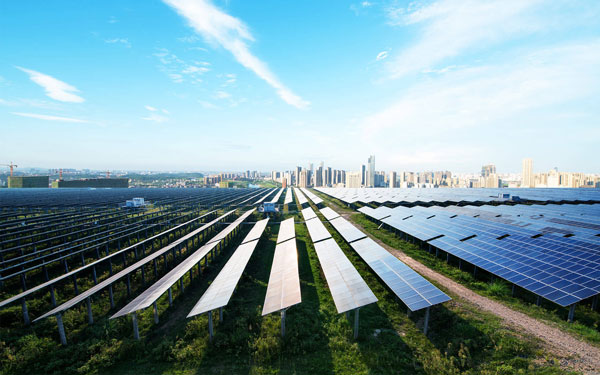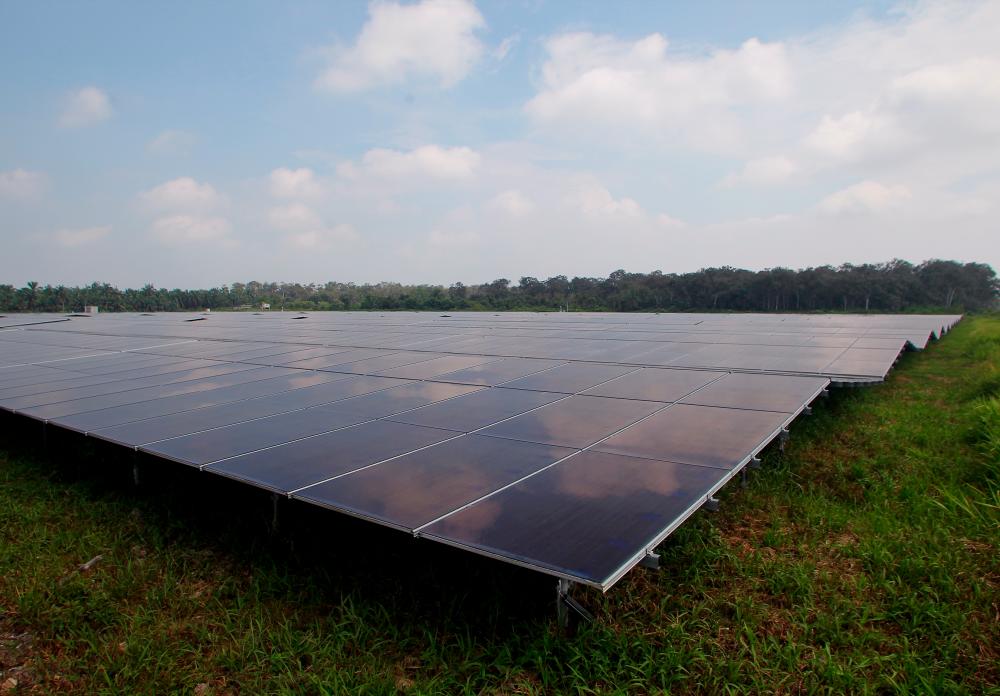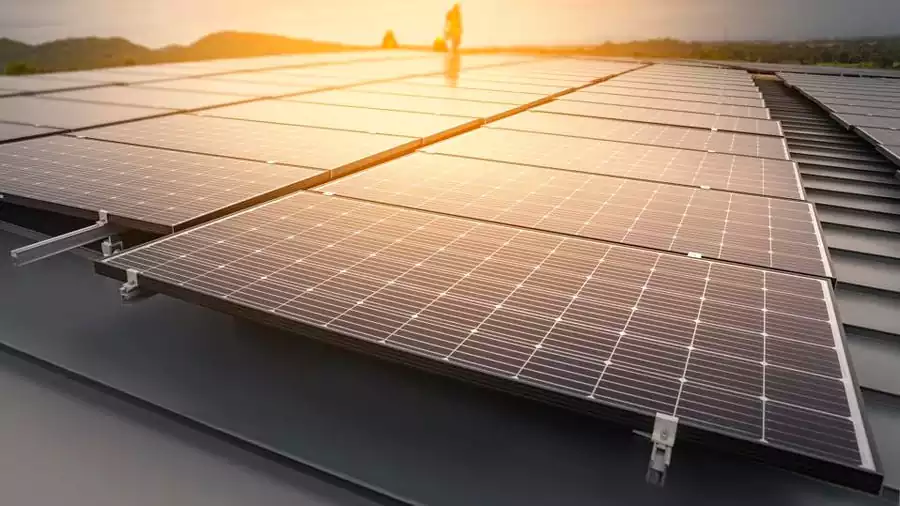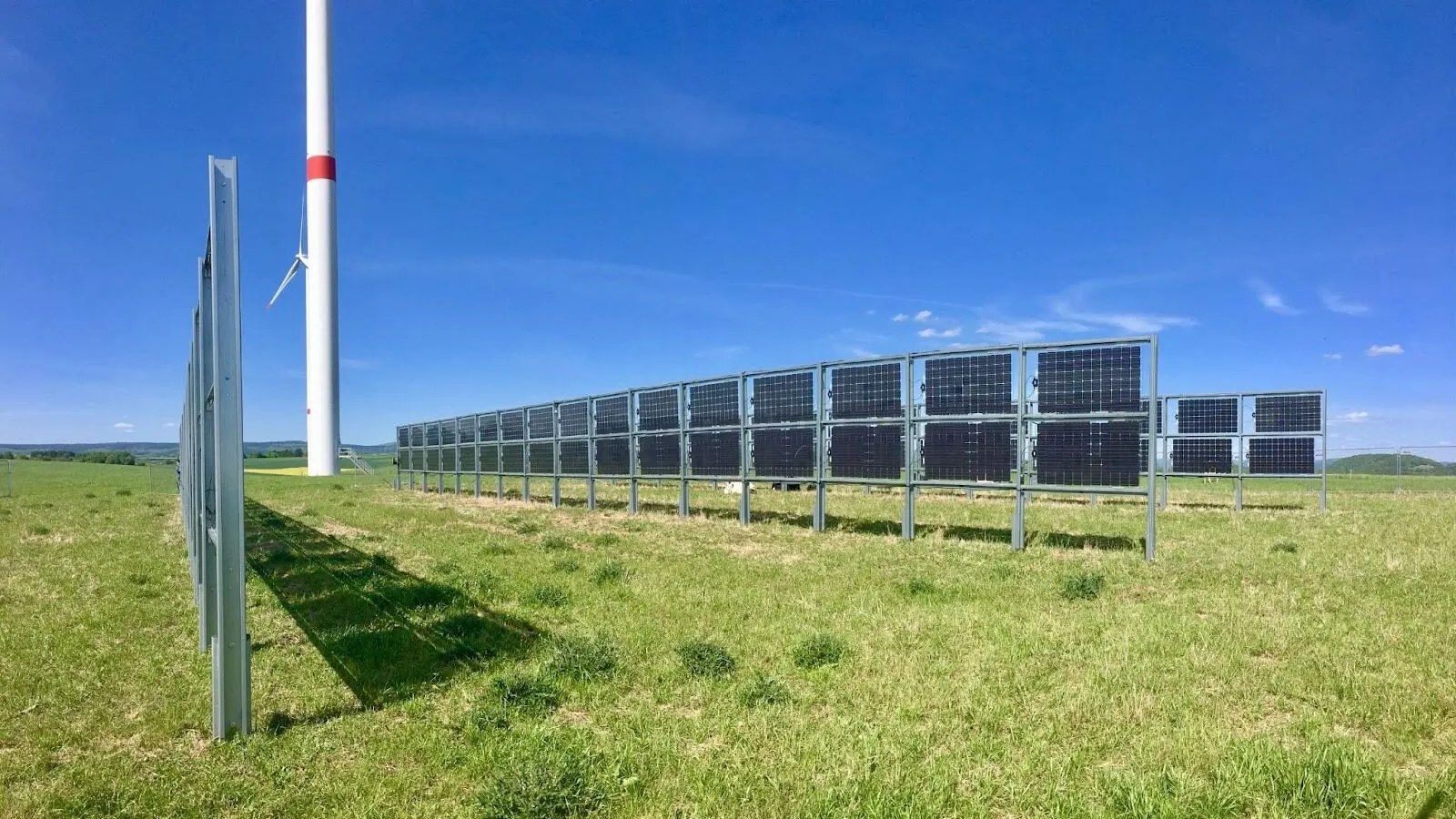Minimizing Reflection Losses
Anti-Reflective CoatingsThe use of anti-reflective (AR) coatings on solar panels in the industry is a very common technique to reduce reflection losses. These coatings aim to decrease the light bouncing off the panel surface. AR coatings can improve the efficiency of solar panels by about 2 - 3 %) A bare glass-covered silicon solar panel, the most common variant in large-scale terrestrial PV systems (mostly reflecting light upwards and downwards), shows a reflection loss about 4%, whereas AR coatings can reduce this low down to between only one an two percent without any severe preference towards absorption- or transmission-losses.

Texturing or patterning of the surface of the solar cells themselves. This textured surface keeps the light from bouncing away, trapping it within these photovoltaic cells. Texturing can reduce surface reflection to less than 1% over relevant solar wavelengths. This method of etching fine patterns onto the silicon wafer, and is able to be tuned into target light frequencies using an approach.
Refractive Index MatchingApplication of refractive index matching layers between various layers in the solar panel can also reduce reflection losses to a large extent. These layers work by adjusting the refractive indices of various materials in the panel to reduce any refractive boundaries at which light may be lost. One way to transition from air into glass might be with a layer that has gradually increasing refractive index, facilitating the change between materials while minimizing reflection.
Concentrators and light trappingA more complicated but highly effective method is to use optical concentrators and light trapping devices. By focusing sunlight to a small, highly efficient photovoltaic area similar to the binoculars of an airplane pilot(optical concentrators), material cost is reduced while overall efficiency skyrockets. Light trapping: These are structures that have been designed in any solar cell which could be different causes refract or reflect inside the semiconductor material before reaching it out.
Overcoming Absorption Issues
Solar cells are able to capture a range of the visible light spectrum, but they often struggle with certain absorption problems which make it difficult for them to absorb all regions of energy sunlight has. One of the greatest limitations to solar cells today is enhancing their ability to absorb sunlight, and hence generating a higher current (output) from them.
Advanced Material LayersThe addition of complex material layers to a solar cell is one approach that can directly enhance the absorption. Perovskite materials combined with the conventional silicon cells could collect a wider range of sunlight. We have even seen efficiency gains with this hybrid process, raising efficiencies from around 20% for just a silicon cell to well above 25%. Perovskites are well known for their capacity to absorb visible light -- the kind of light harnessed most efficiently in a silicon cell.
Nanophotonic EnhancementsUsing nanophotonic structures for solar cells can significantly boost the absorption of light. At the near-microscopic level these structures bend and shape light, allowing all but a unfortunate few photons access to plant leaf cells; most of the less fortunate are reflected away with an energy price paid by no one. Use something called nanopillars or nanowire that would be on the surface of cells, light has a longer path as it goes through the cell, in which there's more time for those photons and sunlight energy to convert into electricity.
Spectral SplittingSpectral splitting technologies. Optical elements are used in these systems to split the solar spectrum, whereby light of separate wavelengths is directed on different cells meant for those same spectra. It contributes greatly towards the efficiency of the overall system. This would mean a combination of silicon and gallium arsenide cells in a system receiving separate slices of the NVIS spectrum to convert what they do with best efficiency.
Reducing Resistance In Wires
Conduction of electricity is done effectively by the solar energy systems that increases power output. Less resistance in wiring translates not only to better efficiency overall but also to lower levels of heat that can damage system parts over time.
High Conductivity MaterialsThe use conductive materials such as copper or aluminum for wiring. Copper delivery to give good performace fledging where as it is widely used in solar installations for its fantastic electrical conductivity. Replacemnt of Copper with Aluminum in the wiring for Solar Panel can reduce upto 30% resistance comparing to copper, eventually energy transfer from solar panels output system into Inverter is efficient.
Optimizing Wire ThicknessA change in the diameter of wires used within a system allows to achieve higher thickness thus lower resistance. A cross-sectional area of the wire is inversely proportional to resistance (thicker wires have less "resistance"). Increasing the diameter of wires by a couple millimeters can reduce resistance and provide better current flow, which is essential in improving how well your solar power system performs.
Shortening Wire LengthsSolar power systems can also be advantageous by reducing the length of wires, resulting in decreased resistance. The loss of energy in wires corresponds to their length, installations can be designed so that components are close together and lengths of wiring required will be very short. As little as positioning of inverters near its solar panels can cut wire lengths by up to 50% .
Managing Shading Effects
Solar systems face a big problem with shading, which can reduce the output of even the most well-designed installations by half or more. Successfully minimizing these shading effects is critical if energy production efficiency is to remain high throughout the life of the solar installation.
Strategic Panel PlacementThe location and orientation of solar panels is critical to avoiding shading. This can involve using a sun path analysis to place panels in the best position for peak sunlight throughout the year. By performing such an analysis during the planning phase, energy output can be increased by more than 20%, and areas that are frequently shaded should not be considered.
Implementing MicroinvertersThe use of microinverters instead of regular inverters can minimize the chances of shading on solar panels. While string inverters regulate the output of an entire string of panels at once, microinverters control the output of individual panels. This ensures that a single shaded panel does not cause unshaded panels to degrade in performance. Overall efficiency can be improved by allowing each panel to function at its maximum capacity even when the system is partially shaded.
Dynamic Shading SolutionsThese systems include automated solar trackers that follow the sun's position to optimize exposure and mitigate static shadows. Solar tracking systems can harvest 10% to 25% more energy than fixed installations and reduce shadow duration and impact through associated solutions.
Optimizing Load Matching
Successful load matching in solar energy systems achieve the generation and consumption demands to be balanced, which increases both efficiency as well as economic benefits of this system. This is where various strategies and technological solution comes into action to optimize the system as per need of a day in terms energy it requires.
Smart Inverter TechnologySmart inverters are crucial for coordinating dynamic load. It says these devices can correct the phase and magnitude of electricity produced by a solar panel so that it more closely matches current energy needs. A smart inverter can dial its output down during low demand times and ramp it up as spikes hit to keep production equal with usage patterns without waste.
Demand Response SystemsDemand response management systems entail scheduling energy usage with production. They adjust the amount of power they consume based on whether there is solar energy in surplus. For appliances, the maximum amount of virtually immediate programmed to run at full power when solar Filomena peak production time so even more electricity can be used. This can translate into energy savings up to 25%, as less wasted power and lower grid consumption during pricey peak hours.
Energy Storage IntegrationLoad matching of renewable energy generation could be supported by batteries as is an essential component of the Total Energy Transition one part. Energy is generated by the sun and when stored in batteries during peak production periods, this same energy can be used instead of drawing on less environmentally-friendly sources of power for use at night or other times of high demand. A battery system can allow for a house to run on solar energy at night time, which will further decrease the load that is drawn out of the grid and makes your solar installation overall more efficient.

Enhancing Inverter Efficiency
Inverters - The Next Link In Solar Energy Systems To Take A New Shape One of the most important parts in a solar energy system is the series of inverters which convert DC electricity produced by solar panels into AC power that can be used by homes and businesses. Improving the efficiency of inverters can dramatically increase system output and reduce energy loss.
Advanced semiconductors MaterialsThe use of advanced semiconductor devices such as silicon carbide (SiC) and gallium nitride (GaN) can greatly increase inverter efficiency. The material can function at much higher temperature and voltage levels more efficiently than traditional silicon-based semiconductor. SiC inverters are able to offer efficiencies up to 98% whereas the typical silicon inverter will be capable of supporting approximately a 94%. This enhancement enhances the energy conversion while reducing heat loss and prolongs inverter life.
Improved Thermal ManagementIntegrating advanced thermal management systems in inverters helps to keep them running at peak efficiency by keeping operating temperatures under control. By increasing the thermal capacity of power electronics (e.g., more efficient heat sinks or liquid cooling systems), inverter efficiency degradation by overheating can be avoided. Would be the use of larger surface area heat sinks, which could reduce temperature by up to ten degrees celsius leading you better performance and longer life.
Software OptimizationSoftware optimization is an essential part of these operations to obtain maximum power (or efficiency) from the inverter. Firmware, can enable inverters to perform better by learning from solar panels input conditions and adapting power output through the grid. Dynamic algorithms that enable output voltage and frequency to be regulated more effectively according to grid requirements can help decrease energy conversion mismatch losses.



